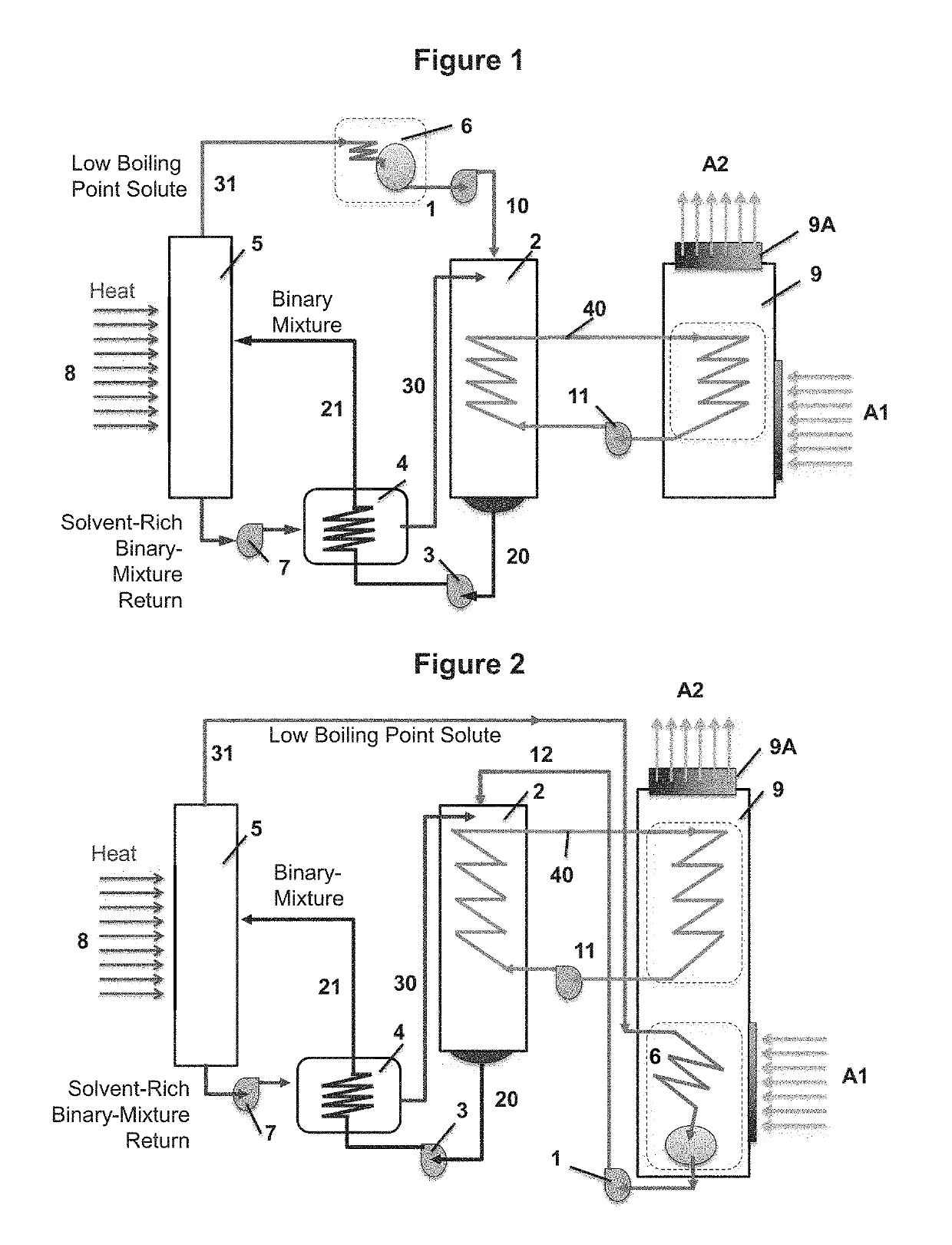Thermally driven environmental control unit
a control unit and environmental technology, applied in the operation mode of machines, refrigeration machines, light and heating apparatus, etc., can solve the problems of high electrical demands to handle the pressurized parts of the system, limited adsorption systems, and significant amounts of energy required to effectively change the temperature of the space, etc., to achieve efficient overall heating or cooling systems, simple environmental control units, and easy separation for re-use
- Summary
- Abstract
- Description
- Claims
- Application Information
AI Technical Summary
Benefits of technology
Problems solved by technology
Method used
Image
Examples
Embodiment Construction
[0015]In one embodiment of the invention of the present system (shown in FIG. 1) the system is designed to provide cooling to an environment, in another embodiment of the invention (shown in FIG. 2) the system is designed to provide heating to an environment, and in a third embodiment of the invention (shown in FIG. 3) the system is designed to selectively provide cooling or heating to an environment.
[0016]As hereinabove described and shown in FIGS. 1, 2 and 3, the system of the present invention generally includes, in a closed loop, non-pressurized flow cycle, a mixing heat exchanger 2, a heat recovery unit 4, a fractionator / evaporator column 5 for separating the solute and the solvent, such as a fractionator, and a condenser 6. A liquid loop 40 is coupled with both the mixing heat exchanger 2 and an air handler 9, to provide warm or cool supply air. When the system is used to heat an environment, the condenser 6 is incorporated within the air handler 9; when the system is used for...
PUM
 Login to View More
Login to View More Abstract
Description
Claims
Application Information
 Login to View More
Login to View More - R&D
- Intellectual Property
- Life Sciences
- Materials
- Tech Scout
- Unparalleled Data Quality
- Higher Quality Content
- 60% Fewer Hallucinations
Browse by: Latest US Patents, China's latest patents, Technical Efficacy Thesaurus, Application Domain, Technology Topic, Popular Technical Reports.
© 2025 PatSnap. All rights reserved.Legal|Privacy policy|Modern Slavery Act Transparency Statement|Sitemap|About US| Contact US: help@patsnap.com


